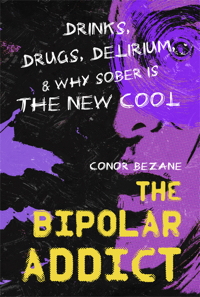It’s midnight. There’s a candle burning in a bedroom, a bottle of Bordeaux gleaming in its wake. Creative genius flows as quickly as the wine. Ernest Hemingway — Nobel- and Pulitzer Prize-winning author — is hunched over his Royal Quiet de Luxe typewriter in a frenzy, crafting the perfect prose: clickety-clack-clack-clack as he sips the red wine. The Old Man and the Sea or The Sun Also Rises take shape. He’s drunk.
This is how I imagine the great American novelist Ernest Hemingway in action. The truth is, Hemingway never drank while writing. But when he was not writing, he was a certifiable lush. And despite his drinking, he thrived as a writer.
In a 1935 letter to Russian translator and critic Ivan Kashkin, Hemingway described his love of alcohol:
“I have drunk since I was fifteen and few things have given me more pleasure. When you work hard all day with your head and know you must work again the next day, what else can change your ideas and make them run on a different plane like whisky? When you are cold and wet, what else can warm you? Before an attack, who can say anything that gives you the momentary well being that rum does? I would as soon not eat at night as not to have red wine and water. The only time it isn’t good for you is when you write or when you fight. You have to do that cold. But it always helps my shooting. Modern life, too, is often a mechanical oppression, and liquor is the only mechanical relief.”
Sugary drinks were a no-no for Hemingway, given that he had diabetes. Although he lived in Havana for a time, he was not an aficionado of the famous minty and sugary Cuban mojito, as some would think.
According to To Have and Have Another, a mixology book written by Philip Greene about Hemingway’s love affair with alcohol, the dry martini — served very, very cold — was his favorite drink. Characters in Hemingway’s books often drank what he himself drank.
In addition to his beloved martini, Hemingway drank cocktails such as The Negroni, The Americano, The Jack Rose, The Gimlet and The Bailey, according to Greene.
Hemingway was rumored to have invented the Bloody Mary, although this urban legend has proven untrue. In Paris, when he was supposed to be abstaining (wife’s orders), a bartender served him a vodka drink with tomato juice to disguise the alcohol smell. Contrary to popular belief, the Bloody Mary was not named after Hemingway’s fourth wife, Mary.
In For Whom the Bell Tolls, Hemingway glamorizes drinking, describing it as “opaque, bitter, tongue numbing, brain warming,
Hemingway biographer Carlos Baker writes that the author “explained the nights of drinking as a necessary counterforce to the daily bouts of writing which left him as whipped, wrung out, and empty as a used dishrag.”
Many of us alcoholics can relate. When off the wagon, we frequented bars for after-work drinks following a long day at the office.
And while Hemingway lived a full life loaded with countless adventures and travels, he committed suicide in 1961, dying at the age of 61. The prolific author penned nine novels and eight posthumous nonfiction books. But it was pleasure-seeking alcohol binges that seemed to define much of his life. And the world traveller loved his local barrooms.
Hemingway had a wealth of life experiences, from being an ambulance driver in Italy in WWI to covering WWII and the Spanish Civil War as a war correspondent to safaris in Africa, but his home away from home was always the bar.
“Don’t bother with churches, government buildings, or city squares,” Hemingway once said. “If you want to know about a culture, spend a night in its bars.”
Nota bene: Although he was never diagnosed, there is evidence that Hemingway suffered from bipolar disorder.








